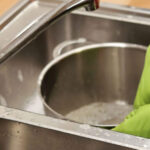
Practical Ways To Switch From A Consuming To Producing Lifestyle
- Thomas Nelson
- August 10, 2022
- Sustainable Living
- 0 Comments
There is an interesting phenomenon underway in our society. Each progressive generation fails to inherit some skills from their ancestors, and that’s normal. You don’t necessarily need to know how to use a plow if you now have a tractor. But it seems, especially among millennials, that the loss of basic DIY knowledge was lost in a big way from generation to generation. It’s been the case for me and many people I know. We are a generation of consumers, producing little to nothing.
My grandparents were seasonal workers who knew how to make, build, and do a wide variety of things they needed. By the time I reached adulthood, I learned none of those skills. It’s for the same reason I cited above: I didn’t need to. Why should I learn to can when I can buy cheap canned stuff at the store?
But just because I didn’t learn to do something from my family doesn’t mean I can’t learn it now. There are good reasons to shed some of our consumer habits and learn to be producers.
Why be productive?
In my experience, there are three big benefits to shifting from a consuming to a producing lifestyle. The first is security. When you are fully reliant on other people and businesses to produce the goods you need to make it through a day, you are completely at the mercy of the supply chain.
Supply chains aren’t immune from disruption. The more you know how to do and the more you choose to shift from consumption to production, the less reliant you are on these supply chains. It’s not realistic to expect an individual to learn to make everything themselves, but even knowing how to DIY some basic necessities can make a huge difference if they suddenly become unavailable.
The second benefit is financial. If you can produce a good you would normally buy, you can often drastically reduce the cost of that item, or even turn a slight profit. For example, the DIY laundry soap that I make costs about $.40 per gallon, compared to $20 or more for the same quantity of an eco-friendly detergent. If I make 2 gallons and sell one to my neighbor for a dollar, I’ve taken a product that normally costs me $20 and turned it into a stunning 20-cent windfall.
The last benefit is hard to quantify: satisfaction. There is something just so phenomenally satisfying about being able to produce something yourself. When I make breakfast in the summer, I go outside and collect some eggs from the hens, a tomato and some basil from the garden, and I scramble it all up. It’s delicious and nutritious, and I produced it. That feeling is so deeply satisfying. It feels good to produce something.
How do switch yourself from a consumption lifestyle to a productive one?
Shift your mindset first
The first thing you really have to do is think it out. Start thinking about how your most common daily-used items are produced and how valuable it will be to you to switch to producing them yourself.
An example I used earlier was laundry soap. That soap was made in a facility somewhere with tons of unknown ingredients, packaged in a single-use plastic container that may or may not be recycled, and shipped hundreds of thousands of miles to the store near me. For me, what’s the value in making it myself? There’s the cost, the environmental impact, and the health impact of whatever’s actually in that soap.
Thinking it through in this way provides me with crucial buy-in to the idea of being productive. Is it worth the 20 or so minutes that it takes to make? For me, absolutely. If you want to make this change, you have to change your mindset and figure out what will drive you to hang with it.
Take a hard look at your purchases, consider what you can be producing yourself
One of the ways that I got started was to look at receipts from my purchases over the course of a few weeks to months. What was I getting weekly? One of the items was tomatoes. I’d usually buy 3-4 per week and put them in guacamole or on a sandwich. But what if I could produce some of those tomatoes myself?
I did my research and one tomato plant, costing around $2 if I didn’t grow it from seed, would produce around 20 per season. In the end, one plant would cover about 10% of my annual tomato consumption. 5 would cover half, especially if I got a variety that produced early and continued producing late.
So take a hard look at your purchases. Make a list of items that fit into the motivating factors that are getting you buying into being productive. Start there.
Set a goal for producing a few things
Setting a goal is a big part of executing on being a more productive person. Remember: don’t go crazy right out the gate. Start small. If you buy toothpaste once every 2 months and you’re about to run out, try out a few of the DIY recipes out there for one that you really like. If you don’t like any of them, maybe it’s better to stick with store-bought.
If you have a list of 20 things you want to learn to grow or make, that’s awesome! Look at spacing each one out and starting just a little bit at a time. Taking on, for example, one per week will help you build a sustainable habit that you can stick with.
Create harmony with the environment
So much of what bothers me about the way things are made these days is that the systems we have in place for most production resemble absolutely nothing that you’d find in the natural world. It got me asking myself, what would nature do? Would nature grow an edible plant but tear out all of the other plants and throw them in the garbage? No. But nature might send a rabbit that would eat some of those weeds and poop out fresh manure that feeds the edible plant.
Thinking about that natural system lead me to keeping rabbits. My pet rabbits eat food waste and weeds – things that would otherwise end up in the compost or trash – and rapidly produce manure that enhances my edible plants. This system took me from wasteful to productive.
Avoid research paralysis
Once you start researching how to make or build something, it can be easy to get caught up in research paralysis. Don’t get me wrong, research is an important part of the process, but at some point, you need to close the book, get off the internet, and get started. Don’t let the research process take the wind from your sails.
Grow from failure
Similar to avoiding research paralysis, don’t succumb to failure paralysis either. Just because something you tried to make didn’t work the first time doesn’t mean you shouldn’t try again. Think about the first time you cooked a dish that didn’t turn out. Did you never make spaghetti again? You likely took a second look at the recipe and tried it again. View being productive through the same lens.
Failure is fine. It helps us grow. Make a choice to grow from those failures.

